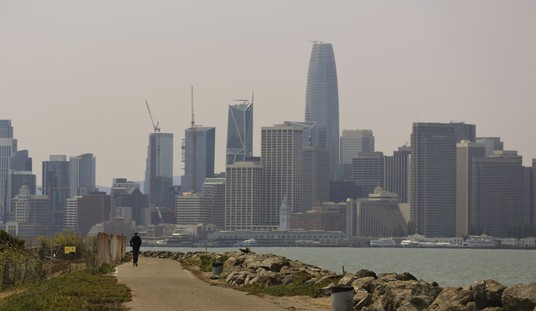They’re not the first states to open up eligibility to everyone 16 and over — Alaska, West Virginia, and Mississippi are already doing that — but together Texas and Georgia account for 40 million people, more than a tenth of the U.S. population. And Texas is the second-most populous state, of course, behind only California. Having a jurisdiction that large dishing out vaccines to all comers will put pressure on the 45 states that are still following priority schemes to make their doses available to all adults who want them sooner rather than later.
Remember that Biden set a deadline of May 1 for states to open eligibility to the general population. I wonder if there’ll be a single state that hasn’t already done that by the end of the first week of April, say.
We’ve entered a new phase of the pandemic with today’s news. Georgia will open things up to all adults on Thursday while Texas will wait until Monday.
The Texas Department of State Health Services is still asking providers to prioritize appointments for people who are 80 and older, and to prioritize walk-ins from anyone in that age group who shows up without an appointment. The vaccines are not limited to Texas residents, and citizenship is not a requirement for the vaccine…
The vaccine is still in short supply as the announcement makes about 22 million people eligible on Monday. The state has been allocated more than 14 million doses since distribution began in December — far short of the supply needed to fully vaccinate everyone right away…
“Economics will play into this whole situation, where folks who are less able to access the resources are going to have a harder time getting it,” Prince said. “The concern I still have is how do we meet the demand in an equitable way, and right now I think we’re still struggling with that.”
The five states that will soon have general eligibility for the vaccine are an interesting mix. They’re all red (well, reddish-purple in Georgia’s case), and red states may be a little more willing to part from priority schemes driven by “equity” considerations in the interest of getting people vaccinated faster. But the group of five is also a strange collection of underperformers and overperformers on vaccinations. Alaska and West Virginia have been two of the big success stories of the national effort, with the former currently ranked second among states by share of first doses distributed and the latter having immunized its nursing-home residents at an unusually fast pace. But the other three are laggards. Texas, Georgia, and Mississippi are all in the bottom seven as measured by share of first doses administered, each below the national average of 25 percent. They’re in the bottom 10 measured by the share of the population that’s been fully vaccinated as well.
Which makes me wonder: Maybe public health experts there fear they’ve hit a “wall” in vaccine hesitancy among the currently eligible population and have concluded that the only way to keep things moving with doses is to make everyone eligible. Remember that Republicans as a group are more likely to say they’ll turn down the shot than other demographics are. From YouGov:

Texas and Georgia may have discovered that they’ve already worked their way through most of the older, willing conservative population and have now run up against a more hesitant remnant. They can either hold the current supply of doses back for those people for a few more weeks while trying to coax them into getting the jab, probably with minimal success, or they can open it up to everyone and pick up the pace on herd immunity. If that’s what’s happening here then we’ll probably continue to see redder states overrepresented among those that are earliest to make the entire adult population eligible for the vaccine.
The Times has a downer of a story today about people who got both shots and then came down with COVID anyway, in some cases with symptoms. The bad news is that it’s possible; we all equate “95 percent effective” with “I won’t get sick after I’m vaccinated” even though we know rationally that that’s not what “95 percent effective” means. The good news is that post-vaccination illness appears to be very rare. Very:
One study found that just four out of 8,121 fully vaccinated employees at the University of Texas Southwestern Medical Center in Dallas became infected. The other found that only seven out of 14,990 workers at UC San Diego Health and the David Geffen School of Medicine at the University of California, Los Angeles tested positive two or more weeks after receiving a second dose of either the Pfizer-BioNTech or Moderna vaccines. Both reports, published on Tuesday in the New England Journal of Medicine, show how well the vaccines work in the real world, and during a period of intense transmission.
That’s four and seven infections, respectively, out of thousands and thousands of vaccinated people. Not four and seven illnesses. Relatedly, new data from Israel shows that the Pfizer vaccine is 99.3 percent effective at preventing symptomatic illness two weeks after the second shot. The Times’s takeaway from its story is that, although the risk of transmission is small, vaccinated people should continue to wear masks because they can still catch the virus afterward. But really, the risk is so small that the takeaway should be the opposite — if infections among the vaccinated are this incredibly unlikely, there should be nothing holding them back from getting back to normal socializing. The NYT and Israeli stories are an argument for fewer precautions among the immunized, not more.
I’ll leave you with this analysis, which estimates that 25 percent of the population refusing to get vaccinated will mean 4.6 million more cases this year — most or all of which could be avoided. And the human cost isn’t the only cost. Quote: “Universal vaccination would mean 8.3 million fewer virus cases this year, and would trigger an economic boom according to the projections, with fourth-quarter GDP growth 2 percentage points faster and an extra 2.6 million jobs created by December.”








Join the conversation as a VIP Member